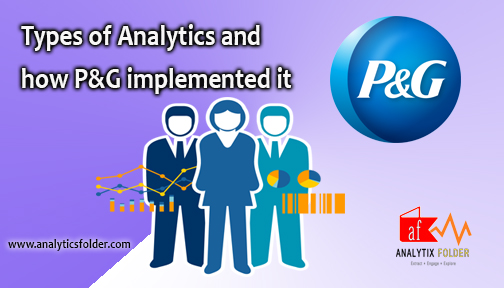Uncertainty
and an overwhelming number of alternatives are two key factors that make
decision making difficult. Business Analytics approaches can assist by
identifying and mitigating uncertainty and by prescribing the best course of
action from a very large number of alternatives. In short business analytics
can help us make better informed decisions.
There
are three categories of analytics: descriptive, predictive and prescriptive. Descriptive Analytics describes what
has happened and includes tools such as reports, data visualization, data
dashboards, descriptive statistics, and some data mining techniques. Predictive Analytics consists of
techniques that use past data to predict future events and includes regression,
data mining, forecasting and simulation.
Prescriptive Analytics uses input data to determine the best course of
action. This class of analytical techniques include simulation, decision
analysis, and optimization.
Consumer
goods giant Procter & Gambler
(P&G), the maker of such well-known brands as Tide, Olay, Crest, Bounty
and Pampers, sell its products in over 180 countries around the world. Supply
chain coordination and efficiency are critical to the company’s profitability.
After many years of acquisitions and growth, P&G embarked on an effort
known as Strengthening Global Effectiveness. A major piece of that effort was
the North American Supply Chain Study, who purpose was to make the supply chain
in North America as efficient as possible, while ensuring that customer
requirement were met.
A
team of P&G analysts and managers partnered with a group of analytics
faculty at the University of Cincinnati to create a system to help managers
redesign the supply effort in North America. The fundamental question to be
answered were:
1. Which
plants should make the product families?
2. Where
should the distribution centres be located?
3. Which
plant should which distribution centres?
4. Which
customers should be served as each distribution centre?
The
team’s approach utilized all three categories of business analytics:
Descriptive, Predictive and Prescriptive.
At
the start of the study, data had to be collected from all aspects of the supply
chain. These included demand by the product family, fixed and variable
production by costs by plant, and freight costs and handling charges at the
distribution centres. Data queries and descriptive statistics were utilized to
acquire and better understand the current supply chain data.
Data
visualization, in the form of a geographic information system, allowed the
proposed solutions to be displayed on a map for more intuitive interpretation
by management. Because the supply chain had to be redesigned for the future,
predictive analytics was used to forecast product family demand by three-digit
zip code for ten years into the future. The future demand was then input along
with projected freight and other relevant costs, into an interactive
optimization model that minimized costs subject to constraints. The suite of analytical
models was aggregated into a single system that could be run quickly on a
laptop computer.
P&G
product category managers made over a thousand runs of the system before
reaching consensus on a small set of alternative design. Each proposed design
in this selected set was then subjected to a risk analysis using computer
simulation, ultimately leading to a single go-forward design.
The
chosen redesign of the supply chain was implemented over time and led to a
documented savings in excess of $250 million per year in P&G’s North
American supply chain. The system of models were used to streamline the supply
chains in Europe and Asia, and P&G has become a world leader in the use of
analytics in supply chain management.
To
conclude it can be expressed that Descriptive and Predictive analytics can help
us better understand the uncertainty and risk associated with our decision
alternatives. Predictive and Prescriptive analytics, also often referred to as advanced
analytics, can help us make the best decision when facing a myriad of
alternatives.
Author - Kunal Patel
Visit me at - Kunal Patel

The great service in this blog and the nice technology is visible in this blog. I am really very happy for the nice approach is visible in this blog and thank you very much for using the nice technology in this blog
ReplyDeleteDistribution Management System
Iot data visualizationis a very powerful tool to help us understand and communicate machine-generated data. It is also a very effective way of making complex data more meaningful.
ReplyDelete